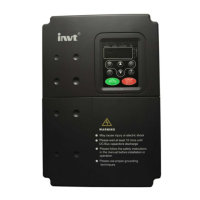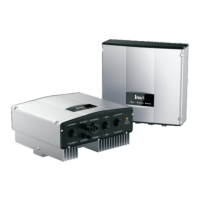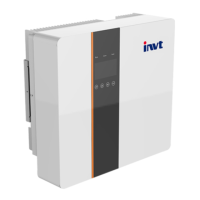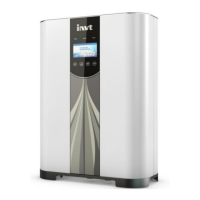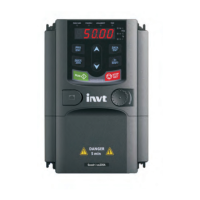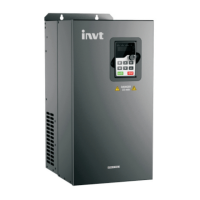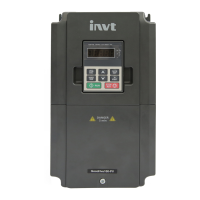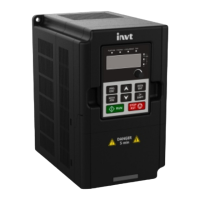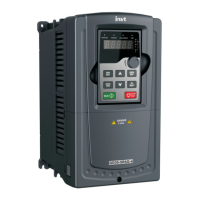What does FAE mean on INVT CHV180-7R5G-4?
- CChristopher BrownSep 18, 2025
If your INVT Inverter displays 'FAE', it indicates a fault of brake feedback. Check the elevator control system.

What does FAE mean on INVT CHV180-7R5G-4?
If your INVT Inverter displays 'FAE', it indicates a fault of brake feedback. Check the elevator control system.
What causes OC3 error on INVT CHV180-7R5G-4?
If your INVT Inverter displays 'OC3', it could be due to load transients, abnormal load (check the load and reduce the transients), low voltage (check the input power), insufficient inverter power (select a bigger capacity inverter), or issues with the encoding disk in a closed-loop system running at high speed (check the encoding disk and wiring).
Why does my INVT Inverter show OV2 error?
If your INVT Inverter displays 'OV2', it could be due to a short deceleration time (increase the deceleration time), high load inertia (increase proper braking kits), or abnormal input voltage (check the input power).
What does OC2 mean on my INVT CHV180-7R5G-4?
If your INVT Inverter displays 'OC2', it could be due to a short deceleration time (increase the Dec time), high load inertia torque (add proper braking kits), or the inverter power being too low (select a bigger capacity inverter).
What does TbE mean on INVT CHV180-7R5G-4 Inverter?
If your INVT Inverter displays 'TbE', it means the contactor feedback is fault. Check the elevator control system.
How to fix SPO error on INVT CHV180-7R5G-4?
If U, V and W phase loss output, check the wiring, motor and cable.
What does EEP error mean on INVT CHV180-7R5G-4 Inverter?
If your INVT Inverter displays 'EEP', it could be due to a read/write fault of control parameters (press STOP/RST to reset) or EEPROM damage (ask for support).
Why is my INVT Inverter showing OV3 error?
If your INVT Inverter displays 'OV3', it could be due to abnormal input voltage changes (install input reactor) or high load inertia (add proper braking kits).
What should I do if my INVT Inverter is running but the motor won’t move?
If your INVT Inverter displays 'Motor doesn’t move after inverter running', inspect if there is balanced three-phase output among U, V, and W. If yes, then motor could be damaged, or mechanically locked. Please solve it. If the output is unbalanced or lost, the inverter drive board or the output module may be damaged. ask for support.
How to troubleshoot no display on INVT CHV180-7R5G-4 Inverter after power on?
If your INVT Inverter displays 'No display after power on', inspect whether the voltage of power supply is the same as the inverter rated voltage or not with multi-meter. If the power supply has problem, inspect and solve it. Also inspect whether the three-phase rectify bridge is in good condition or not. If the rectification bridge is burst out, ask for support. Check the CHARGE light. If the light is off, the fault is mainly in the rectify bridge or the buffer resistor. If the light is on, the fault may be lies in the switching power supply. Please ask for support.
| Power | 7.5 kW |
|---|---|
| Voltage | 380-480 V |
| Frequency Range | 0-400 Hz |
| Protection Level | IP20 |
| Cooling Method | Forced air cooling |
| Input Voltage | 380-480 V |
| Operating Temperature | -10°C to +50°C |
| Storage Temperature | -20 to 65°C |
| Humidity | 5-95% (non-condensing) |
| Altitude | Up to 1000m |
| Efficiency | 98% |
Provides a standard wiring diagram for inverter installation and connections.
Explains the procedures and considerations for wiring the main circuits of the inverter.
Details precautions and procedures for wiring the control circuit terminals of the inverter.
Provides guidelines for installing the inverter to ensure electromagnetic compatibility (EMC).
Explains the function of each button and indicator on the inverter's operating keypad.
Details the procedures for setting parameters and performing operations like autotuning.
Configures multi-step speed settings and S-curve parameters for elevator acceleration and deceleration.
Defines motor parameters like type, voltage, current, and power factor for optimal performance.
Configures parameters for vector control, including PID settings for speed loops.
Sets encoder type, pulse number, and direction selection for encoder feedback.
Provides a table of fault codes, types, reasons, and solutions for diagnosing and resolving inverter issues.
Guides on system debugging, including autotuning, overhaul running, and S-curve adjustment.
Explains multi-step speed and analog quantity speed tracking running modes for elevator operation.
Configures multi-step speed settings and S-curve parameters for elevator acceleration and deceleration.
Defines motor parameters like type, voltage, current, and power factor for optimal performance.
Configures parameters for vector control, including PID settings for speed loops.
Sets encoder type, pulse number, and direction selection for encoder feedback.
Sets protection parameters like phase-failure, overload, and over-speed deviation detection.
